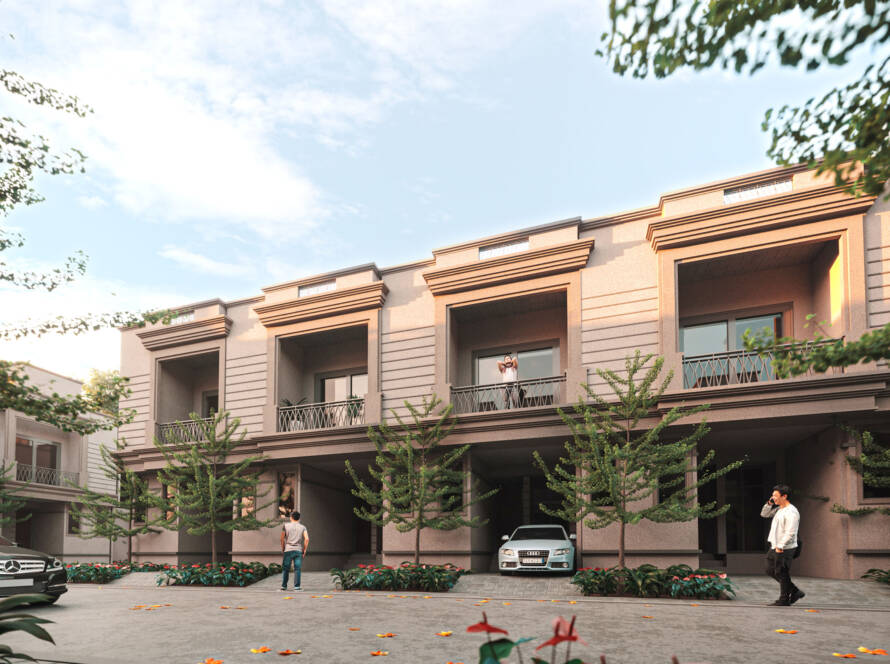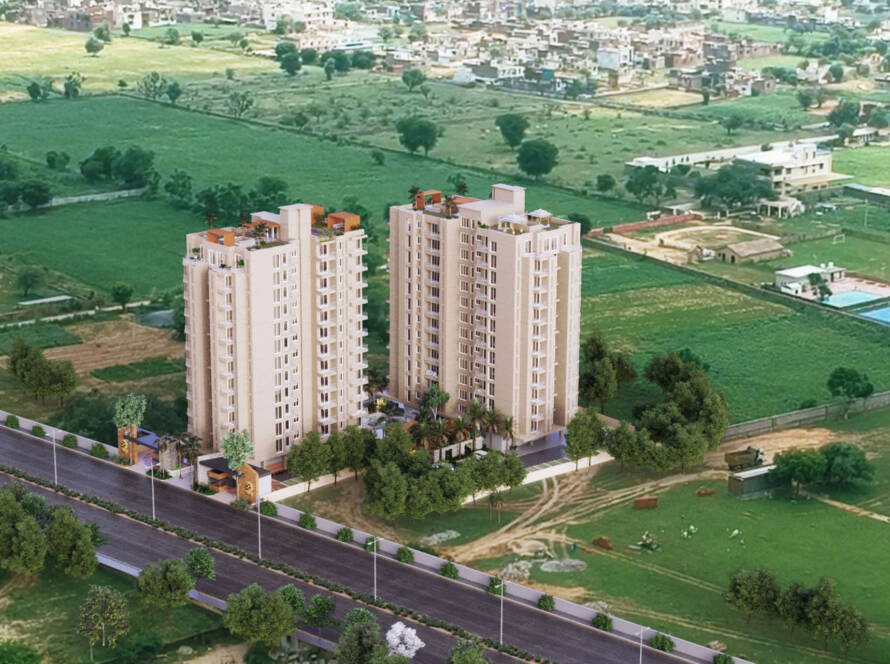Rendering is a crucial part of the interior design process and is used to ensure the completion of even the most challenging projects. Design excellence demands a clear and appealing presentation for clients and investors. Aesthetic value, functionality, and user comfort are the three pillars upon which all design rests. These features cannot be described or illustrated.
creating realistic interiors with 3D rendering, you may effectively communicate the design’s spatial, geometric, textural, color, lighting, line, pattern, and furniture components. Additionally, rendering design lets you simply arrange lighting, decorations, furniture, and interior color schemes.
A good interior design render will help the designer resolve all client issues before the project begins, speeding up design approval and preventing further errors. If you want to win over a client or stay ahead of the curve in your field, 3D interior design rendering is the way to go. Why? Explore further to learn the whole story.
What you need to know about 3D interior rendering
- It is a crucial promotional tool that can boost the worth of your design work.
- Convenient, affordable, and realistic design tool;
- Optimizes design process and ensures intended outcome;
- Identifies design flaws;
- Allows for real-time editing;
- Detailed interior renderings
- Enhances display quality.
What is realistic interiors design with 3d rendering?
A realistic three-dimensional model of space is created through interior design rendering. Using advanced 3D modeling and visualization software, even the most basic 2D floor plans may be converted into photorealistic 3D models. Design render lets you see the upcoming home, office, shopping mall, hotel, or other property throughout project development.
Renderings allow you to evaluate all design elements in the proper sizes and proportions, with real colors and textures, unlike sketches. It accurately depicts the designer’s vision, including structural elements, materials, furnishings, and decor. Interior renderings help you grasp the space, texture, lighting, and how the pieces will be blended. Photorealistic interior architecture visualization generates the effect of presence for the spectator. The interior can be inspected visually and physically, down to the last detail.
This new digital tool for interior designers improves communication between designer and client, allowing clients to provide explicit feedback on what they desire. Since the interior designer may add or alter textures, materials, and other interior features in real time throughout the discussion, the client can see the whole image and be confident in the final product.
Interior designers can use rendering to show clients numerous color, texture, and finish options to create a room in multiple styles. Design representations can be done in daylight, at night, in varied weather, from different angles, etc. You can anticipate design issues before construction and avoid client misconceptions with this approach.
Where is design rendering used?
- Designing the interior
- Architecture
- The furniture design
- Real estate industry
- Promoting and advertising
- Arts and entertainment
Each industry will profit from interior design 3D rendering. Design rendering can be used for special effects in movies, banner commercials, furniture design and interior demonstrations, investment presentations, and real estate sales.
Why is interior design 3D rendering useful?
The most notable benefits of 3D rendering for interior design are the aforementioned precision and realism. Lighting, color palettes, textures, furniture, appliances, lights, curtains, rugs, wallpaper, paints, art pieces, materials, and patterns are just some of the specifics that can be conveyed in photorealistic interior representations. Details such as natural lighting, shadows cast by objects, the presence of people, and the time of day are all taken into account while creating a design render of the interior. The client sees the whole picture, and his preferences are incorporated into the end result. Photorealistic interior visualization gives clients and designers confidence in the final product.
There are further benefits to interior rendering, such as:
- Cost and time savings: To better convey ideas from the designer to the client, 3D visualization is becoming increasingly popular. With the help of photorealistic 3D representations, both the client and the designer are able to spot any mistakes in the floor plan and make the required adjustments right away. As a result, they will be able to move forward with the building without worrying that the final design may need to be revised. You can avoid spending a ton of money and time.
- Personalization: Professionals need interior rendering since its customization allows practically endless possibilities. The 3D artist can modify and alter the materials, textures, angles, wood species, colors, flooring, and shading that you choose from within the 3D application or library of ready-made 3D models. This will be a big factor in setting your idea apart.
- Multiple design options: Customers may experiment with different designs, lighting schemes, and layouts thanks to 3D visualization. Considering room characteristics and comparing interior concepts lets you create a living or work environment that meets expectations.
- 3D interior visualization boosts sales and marketing: Presenting ideas to customers and investors sometimes involves using interior design representations. Interior design 3D visualization helps enhance consumer interest and attract investment by showing every detail of a project. 3D visualization can promote residential, industrial, and commercial interiors. Ready-made 3D interior renders may promote your business and design portfolio on any platform.
Interior designers can use design rendering to create presentations, 3D animations, virtual reality views, 360-degree panoramic images and movies, 3D interior walkthroughs and aerial views, and realistic interior renderings of varied forms and complexity. Enhance customer satisfaction with 3D interior rendering!
Renderings in 3D for the use of interior decorators
Residential and commercial interior design renderings
Interior design rendered in three dimensions has applications in both the private and public sectors. Kitchens, living rooms, and bedrooms are the most requested property interiors to be rendered. Since people will live there for a long period of time, housing should consider all important factors. The interior of the home has a much greater impact on the occupants. The aesthetics, atmosphere, comfort, and functional qualities of the house should be carefully considered. A specialist who takes into account your needs must design it. This is not an easy task, but 3D interior design rendering services can help.
Restaurants, hotels, shopping malls, retail stores, cinemas, and office workspaces use interior architectural rendering for commercial purposes. You may impress buyers and investors with commercial project presentations using interior renderings. Developing significant projects with commercial rendering will boost your business. Every individual can use this visualization.
Panorama Interior 360
360-degree interior panoramas give the place a sense of presence. The viewer believes they are in the middle of the room and can see everything. Moving from room to room, zooming in to investigate interior objects, appreciating the laconicism of the ceiling fittings and the dynamism of the flooring, and virtually walking about the future unique interior and enjoying its beauty are also possible. This approach can help create stores and restaurants. This is wonderful for selling property.
Interior Comparison
Interior Comparison lets you compare two rooms decor, lighting, furniture arrangement, or color schemes at once. Assuming the consumer has two design options, interior comparison can readily resolve doubt. You may also show the interior design in day and night illumination to check how it looks.
Flythrough/walkthrough 3D animation
With the help of 3D interior animation, you can virtually explore any kind of building, be it an apartment, a business, or a country estate. You may also see how everything will appear and how well the theme, furnishings, and decorations will go together. Entering the project lets the client feel the eventual house, workplace, or restaurant. When the client receives such an in-depth explanation, there is no place for uncertainty. These 3D interior renderings are ideal for real estate ads and investor design presentations.
2-D and 3-D floor plans
Creating a house floor plan is crucial to interior design. We offer high-quality, detailed photos to show the space’s convenience and functionality. The size, layout, and space distribution can be determined via a 3D floor design. In 3D, they depict doors, staircases, windows, walls, elevators, columns, and fittings. Both business and residential floor layouts can be drawn up.
When an interior designer approaches us with a vision, we work closely with them to make that a reality. You can choose from our many 3D rendering services. Contact Arc Studio for a customized project approach.
Interior design rendering software
Businesses that specialize in 3D interior rendering use various software to create realistic models. Many artists use these programs
- 3ds Max. It’s the greatest modeling software with Corona Render and V-Ray.
- Photoshop and Fusion. For render post-processing,
- SketchUp;
- Sweet Home 3D, etc.
Rendering is an integral part of the design process for any interior design project. Detailed interior visualization is easy to understand, doesn’t require practical knowledge or abilities, helps customers and contractors communicate, and draws attention from start to finish. Designing with interior 3D representations can transform how designers show their ideas and connect with customers.
After all, CGI projects are photorealistic and drawn accurately. The designer can readily convey sophisticated solutions to non-designers. Additionally, interior 3D renders allow for greater client involvement in the creative process. Professional interior design 3D visualization boosts project value! Contact Arc Studio for professional 3D interior rendering. Count on us to make you look incredible.
Tips for realistic interior rendering
10 strategies for realistic and amazing 3D interior design renderings
When presenting architectural and interior design concepts to customers, 3D renderings provide considerable value. The vision clarifies the discussion, streamlining it and aligning it with all stakeholders’ goals.
Your creative approach and 3D renderings that effectively convey the idea are the actual magic. In addition to helping you sell your customer on your proposal, high-quality 3D interior design renderings leave a lasting impression of your brand’s dedication to excellence.
Gaining experience helps improve expertise in creating 3D renderings. Professional 3D rendering firms that work with international clients and have a diversity of projects organically develop creative skills. Architects, designers, and artists can all make use of the many methods available for producing high-quality 3D interior design renderings. To help 3D rendering developers, interior designers, and architects understand the process, let’s dig further.
Realistic 3D interior design rendering tips
- Understanding expectations
Visualizing the idea in 3D interior renderings can be challenging without knowing its style, mood, and subject. In order to set and understand the client’s expectations, it is important to have conversations about the brand’s connotations, guidelines, and image. This is a crucial stage that speeds up the correcting process and ensures high-quality 3D interior renderings are delivered.
- Proper lighting
The appropriate lighting for each setup is a best practice for 3D interior design renderings. A realistic image requires diverse lighting characteristics. A high-quality 3D interior depiction shows how the appearance changes with time of day, light source, object material, and distance.
- Shadowplay
Finding the correct balance between lighting and shadows offers your 3D interior design models a fresh perspective. To complete the portrayal, it is necessary to comprehend the lighting on the items and work on the shadows.
- Utilizing references
When producing 3D interior design, reference objects are usually helpful, regardless of experience. This technique facilitates creating a photorealistic image by paying close attention to every detail.
- Focused textures
Good 3D interior design renderings allow viewers to identify the materials used on the objects. A 3D rendering tool with a library of materials will let you apply the proper textures to your photographs.
- Resize
When creating 3D interior design renders, object relative sizing is also significant. To create stunning visuals, this means having disproportionate object sizes and paying attention to every detail.
- Adding humanity
When viewers can see how the space would look with people, 3D interior representations are most persuasive during pitches. See the difference by adding human figures to your renderings!
- Color scheme
The creative brief and the designer-communicated theme will choose the palette you utilize for your 3D interior design renderings. Every design is set and designed according to the vision of the client, from neutral brown and white tones to vibrant warm hues, and the proper colors accurately portray the mood.
- Right angle
Choosing camera angles and viewpoints for each 3D interior rendering scenario helps or breaks your pitch. Choosing the right areas helps viewers evaluate the design since each space and setup is unique. Make sure the photographs you present support the designer’s pitch by discussing the best camera angles with them.
- Openness to ideas
Be open to experimentation while following the interior designer’s creative brief. You can focus on subtleties that improve the visual experience. Allow experimenting within the brief and guidelines, and let the amazing products speak for themselves!
These techniques will help you create realistic 3D interior design renderings. When presenting to customers and working on multiple projects at once, however, it can be helpful to work with a professional 3D rendering studio to create stunning visuals of your interior design concepts. This not only maintains the integrity of your brand promise but also guarantees high-quality, comprehensive photographs.
Arc Studio has talented architects and 3D artists on staff who can give you presentation renderings that will help you win more business.



